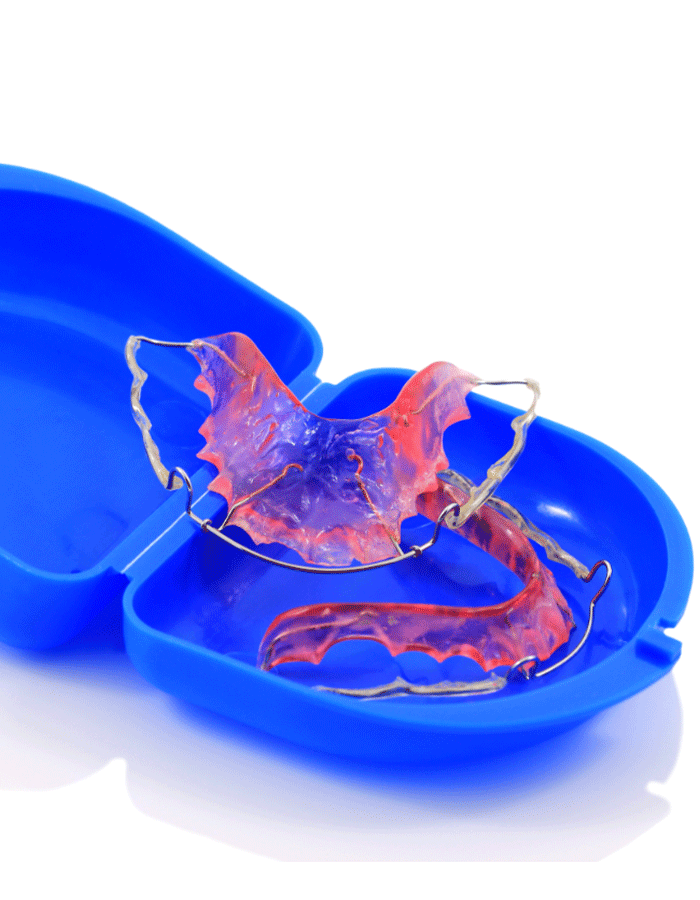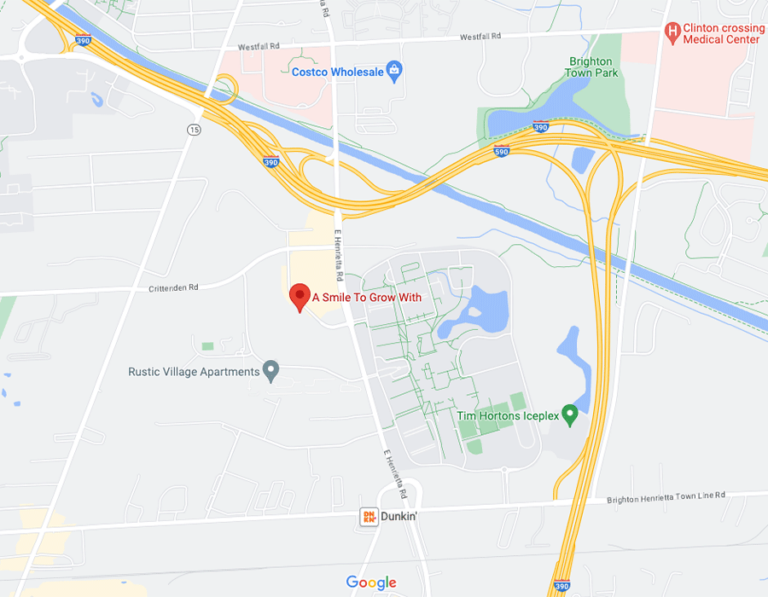Retainers
After orthodontic treatment ends, a retainer is used to maintain the teeth’s new alignment. There are two types of retainers: permanent and removable.
Retainers
Types of Retainers
After any orthodontic treatment concludes, a retainer is used to maintain the teeth’s new alignment long-term. There are fundamentally two types of retainers: permanent and removable. Whether your child is best suited for one or the other will depend on their overall oral health and orthodontic needs as assessed by their dentist.
Removable Retainers
Removable retainers come in two basic types: clear plastic and Hawley retainers. Any type of removable retainer needs to be cleaned as often as your child’s teeth. Using a soft-bristled toothbrush and toothpaste or a baking soda solution is a must to reduce bacteria.
Removable retainers of any type come with the need to follow instructions on their use to be effective. Besides cosmetics, a major advantage of removable retainers is that they can easily be removed for eating, brushing, and flossing.
Hawley retainers can cost approximately $150 to $340 for one and last up to 20 years. These are the most durable type of removable retainer. However, one downside of them is that a metal wire will be visible. These are likely what you picture when you hear the word “retainer.”
Clear plastic retainers come in a variety of brands and are nearly invisible when used. These can cost between $100 to $300 for one or $400 to $1200 for a set of four, depending on the brand. Clear retainers last anywhere from six months to over a year.
Permanent Retainers
Permanent retainers are a long-term, indefinite option, only needing to be replaced or repaired if sufficient wear occurs. They are also not visible like Hawley retainers and are very durable. They can cost between $225 and $550 and up to $1100 if your child requires permanent top and bottom retainers.
Some upsides of permanent retainers are that they do not require following instructions, cannot be lost, and are likely the most durable type of retainer. One downside is that maintaining oral hygiene can be difficult since it can’t be removed, making some areas harder to reach properly. All retainer types can increase bacteria buildup, and since permanent retainers can not be removed while eating, this is particularly true for them.

-
What is the best way to clean retainers?
As your child removes and replaces their retainer during the day, germs and plaque will begin to accumulate. This is not an issue as long as they clean their retainer after each use.
To begin cleaning your child’s retainers, take them off and gently rinse them in warm water. Then, carefully clean their retainer with dish soap using a soft-bristled toothbrush. After you’ve cleaned every inch of your retainer, rinse it and let it dry.
-
How do you know when it's time to replace your retainer?
Retainers are strong, but they won’t last forever. Replace your child’s retainer if they detect a loose fit, an unpleasant tight fit, or cracks emerging in the retainer. Continuing to wear a broken or warped retainer might harm your child’s smile more than it will help keep it in place. If they break or lose their retainers, contact their orthodontist as soon as possible to get a new pair.
-
Can I use my last set of aligners has my retainer?
Retainers are based on the final phase of treatment and are intended for the purpose of retention. Aligners are particularly developed to facilitate mobility. When the retention phase begins and what sort of retainer/retention strategy is suitable for the patient should be determined by the treating physician.
More Questions?
Still have some questions about what the best option for your child? Contact our office and we are happy to help!

